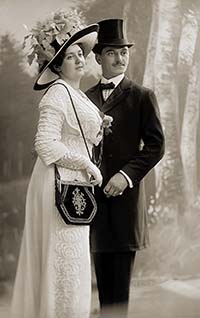Josef Jindřich Šechtl (May 9, 1877 Tábor – February 24, 1954 Tábor) was a Czech photographer who specialized in photojournalism and portrait photography. On the death of his father, photographer Ignác Šechtl, Josef inherited the photographic studios of Šechtl & Voseček.
Photographic career
The Šechtl & Voseček studios were advertised as artistic studios with a special focus on portraits of women and children. Josef Jindřich Šechtl did a number of works in fine art photography; however, most of these photographic prints either have been lost or are in private collections. Many of his architectural photographs have a great artistic quality, in particular those of the old town of Tábor, and his booklet Kutná Hora on that town.
He was among the few professional photographers in the Bohemia experimenting successfully with the bromoil process
Fine art photography
Josef Jindřich Šechtl did most of his work in the limits of the Tábor region of southern Bohemia. However, within these limits, he captured a number of important historical events, and portrayed in great detail life in the Czech countryside. A number of his photo essays have been preserved, either on glass plate negatives or on nitrate films. Until 1911 the photo essays were done in collaboration with his father, Ignác Šechtl, and until the 1930s, with Jan Voseček.
Josef Jindřich Šechtl was, from 1927, among the first photographers in Czechoslovakia to use 35mm film camera Leica.
Selected photo essays preserved in the archive:
Fourth Sokol Gathering in Prague.
 Photo essays
Photo essaysAfter the death of Josef Jindřich the glass plate negatives remained stored in the building of the former Šechtl and Voseček studio and were inherited by his son Josef Šechtl. Josef Šechtl worked as the head of the new syndicate into which the former Šechtl and Voseček studio was turned and his wife Marie Šechtlová as an employee. The communist regime was afraid of what might be seen in Josef Jindřich's photo essays made during the Nazi occupation, and particularly worried that its own members might be revealed as having collaborated. The family was asked to pass the negatives to the "cultural house" (Dům Osvěty) but decided to keep it in private ownership. As a result, Josef Šechtl was arrested in November 1957 and jailed for for one year (ostensibly for taking a photograph of a wedding without permission to practise as a photographer) and the majority of the archive was confiscated shortly afterwards.
Chronology
No comments:
Post a Comment